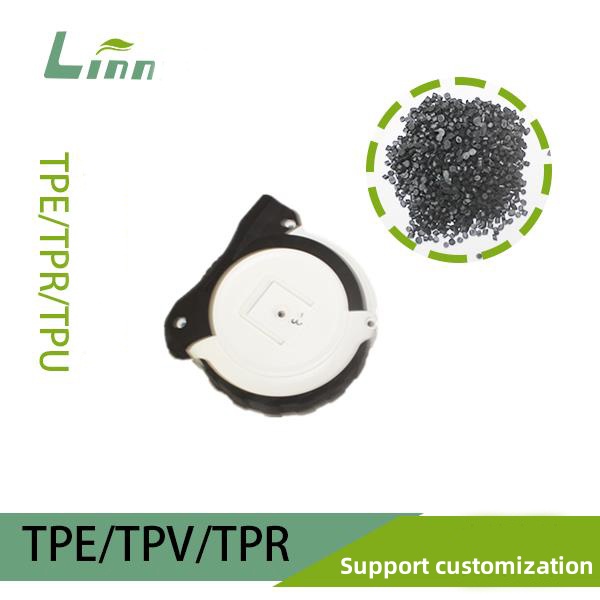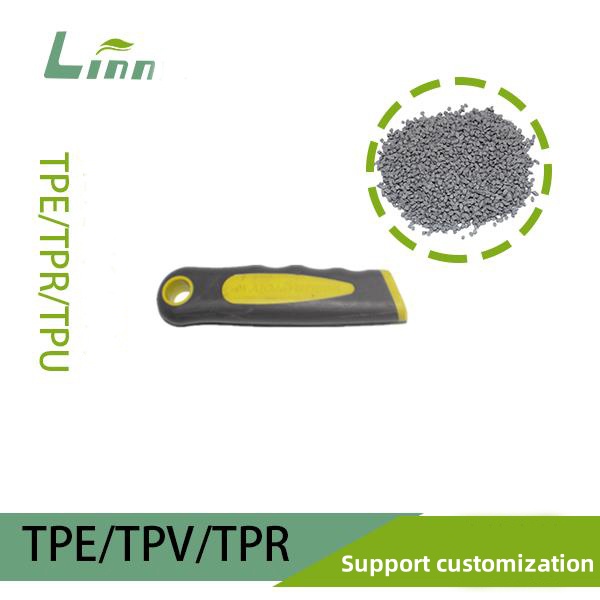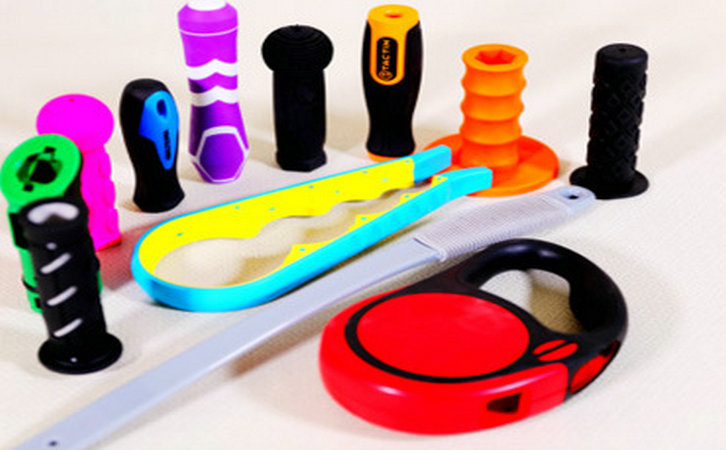When I first got into the materials industry, I was fascinated by how a handful of raw ingredients could transform into TPR (Thermoplastic Rubber) pellets—those versatile little beads that become everything from shoe soles to medical grips. I remember standing in a compounding plant, watching the extruder churn out glossy TPR pellets, and wondering, “What exactly goes into making these?” It’s a question I’ve heard countless times from clients, students, and colleagues over the years. Manufacturing TPR pellets is a blend of science and craft, and the raw materials are the heart of the process. In this article, I’ll walk you through the essential raw materials needed to produce TPR pellets, drawing on my experience to explain their roles, properties, and how they come together. My hope is to give you a clear, practical guide that feels like a conversation with someone who’s been there. Let’s dive into the ingredients that make TPR tick!
Understanding TPR and Its Manufacturing Process
Before we get to the raw materials, let’s clarify what TPR is and how it’s made. TPR is a type of thermoplastic elastomer (TPE), combining the flexibility of rubber with the moldability of plastic. It’s typically based on SBS (Styrene-Butadiene-Styrene) or SEBS (Hydrogenated Styrene-Butadiene-Styrene) block copolymers, making it ideal for products like toys, seals, and footwear.
The process of making TPR pellets, known as compounding, involves blending raw materials, melting them, and extruding the mixture into small, uniform pellets. These pellets are then used in injection molding or extrusion to create final products. The raw materials determine the pellets’ hardness, elasticity, color, and durability, so choosing the right ones is critical. Over the years, I’ve learned that even small changes in material ratios can make a big difference, and that’s what we’ll explore here.

Core Raw Materials for TPR Pellets
TPR pellets are made from a combination of polymers, plasticizers, fillers, stabilizers, and additives, each playing a specific role. Below, I’ve broken down the main raw materials, based on my work with compounding teams and suppliers. I’ll explain what they do, why they’re used, and how they affect the final product.
1. Base Polymers (SBS or SEBS)
The backbone of TPR is its base polymer, which provides the material’s core structure and elastomeric properties. The two most common polymers are:
SBS (Styrene-Butadiene-Styrene): A cost-effective copolymer with good elasticity and softness. It’s widely used for indoor products but has limited resistance to UV light and heat.
SEBS (Hydrogenated Styrene-Butadiene-Styrene): A hydrogenated version of SBS, offering superior durability, UV resistance, and chemical stability. It’s pricier but ideal for outdoor or medical applications.
Role: The base polymer determines TPR’s flexibility, strength, and processability. SBS is softer and cheaper, while SEBS is tougher and more stable.
Typical Use: SBS for toys and shoe soles; SEBS for medical tubing and outdoor gear.
2. Plasticizers
Plasticizers, typically mineral oils or synthetic oils, are added to soften TPR and enhance its flexibility. They reduce hardness and improve flow during processing.
Types: Paraffinic oils (for SEBS), naphthenic oils (for SBS), or synthetic esters (for specialized TPR).
Role: Plasticizers lower the Shore hardness (e.g., from Shore A 90 to Shore A 20), making TPR softer and more elastic. They also aid in melt processing.
Typical Use: High plasticizer content for soft grips or gel pads; lower content for firmer shoe soles.
Note: Too much plasticizer can cause oil migration, leading to a sticky surface. I’ve seen this happen with a client’s toy project—reducing the oil ratio fixed the issue.
3. Fillers
Fillers are inorganic materials added to adjust TPR’s properties, reduce costs, or enhance specific traits. Common fillers include:
Calcium Carbonate: Increases hardness and reduces cost but may lower elasticity.
Talc: Improves stiffness and surface smoothness.
Silica: Enhances tear resistance and grip.
Role: Fillers modify hardness, weight, and cost. They’re critical for balancing performance and economics.
Typical Use: Calcium carbonate for budget shoe soles; silica for grippy tool handles.

4. Stabilizers
Stabilizers protect TPR from degradation caused by heat, UV light, or oxidation during processing and use. Common types include:
UV Stabilizers: Prevent yellowing or cracking in sunlight (e.g., benzotriazoles).
Antioxidants: Protect against heat and oxygen degradation (e.g., phenolic antioxidants).
Heat Stabilizers: Ensure stability during high-temperature processing.
Role: Stabilizers extend TPR’s lifespan, especially for SEBS-based pellets used outdoors.
Typical Use: UV stabilizers for hiking gear; antioxidants for automotive seals.
5. Colorants
Colorants, such as pigments or masterbatches, give TPR pellets their desired hue. They can be organic (bright colors) or inorganic (muted, UV-resistant).
Pigments: Insoluble particles for opaque colors (e.g., titanium dioxide for white).
Masterbatches: Pre-dispersed colorants in a TPR-compatible carrier for uniform coloring.
Role: Colorants enhance aesthetics and functionality (e.g., UV-resistant pigments for outdoor use).
Typical Use: Bright organic pigments for toys; inorganic pigments for outdoor products.
6. Other Additives
Depending on the application, additional additives may be included:
Flame Retardants: For fire-resistant TPR (e.g., halogen-free compounds meeting UL94 standards).
Antimicrobial Agents: For medical or hygiene products.
Processing Aids: Improve flow and reduce sticking during extrusion (e.g., silicone-based aids).
Role: Additives tailor TPR for specialized needs, like safety or hygiene.
Typical Use: Flame retardants for aerospace parts; antimicrobials for medical grips.
To summarize, here’s a table of the key raw materials for TPR pellets:
|
Raw Material |
Examples |
Role |
Typical Applications |
Pros |
Cons |
|---|---|---|---|---|---|
|
Base Polymer |
SBS, SEBS |
Provides elasticity and structure |
Toys, medical tubing |
Defines core properties |
SEBS is costly |
|
Plasticizers |
Paraffinic oil, naphthenic oil |
Softens, enhances flexibility |
Grips, gel pads |
Adjusts hardness |
Risk of migration |
|
Fillers |
Calcium carbonate, talc, silica |
Adjusts hardness, reduces cost |
Shoe soles, handles |
Cost-effective |
May reduce elasticity |
|
Stabilizers |
UV stabilizers, antioxidants |
Protects against degradation |
Outdoor gear, seals |
Extends lifespan |
Adds cost |
|
Colorants |
Pigments, masterbatches |
Adds color and aesthetics |
Toys, outdoor products |
Enhances appearance |
UV-sensitive pigments fade |
|
Additives |
Flame retardants, antimicrobials |
Tailors for specific needs |
Aerospace, medical |
Meets strict standards |
Complex formulation |
How Raw Materials Come Together
Manufacturing TPR pellets is a precise process that blends these raw materials to achieve the desired properties. Here’s a simplified version of how it works, based on my time in compounding plants:
Weighing and Mixing: Raw materials are weighed according to the formula (e.g., 40% SEBS, 30% oil, 20% filler, 10% additives). They’re mixed in a high-shear mixer to ensure uniformity.
Compounding: The mixture is fed into a twin-screw extruder, where it’s melted and kneaded at 150-220°C. This blends the materials at a molecular level.
Pelletizing: The molten TPR is extruded through a die, cooled in water, and cut into pellets (typically 2-5 mm in size).
Quality Control: Pellets are tested for hardness, color, and performance (e.g., tensile strength, UV resistance) to ensure consistency.
I recall a project where a client’s TPR pellets were too brittle for shoe soles. The issue? Too much calcium carbonate filler. We adjusted the formula to include more plasticizer and less filler, and the next batch was spot-on. Compounding is a balancing act that requires constant tweaking.

Factors to Consider When Selecting Raw Materials
Choosing the right raw materials for TPR pellets depends on several factors. Here’s my checklist, honed from years of working with manufacturers:
Application Requirements
Consumer Goods: SBS, high plasticizer, and vibrant pigments for toys or grips.
Outdoor Products: SEBS, UV stabilizers, and inorganic pigments for durability.
Medical/Food-Contact: SEBS, food-grade oils, and certified additives (e.g., FDA, LFGB).
Industrial: High-performance additives like flame retardants for aerospace or automotive parts.
Hardness and Flexibility
Adjust plasticizer and filler ratios to hit the target hardness (e.g., Shore A 20 for soft pads, Shore A 80 for rigid soles).
Environmental Conditions
For UV, heat, or chemical exposure, prioritize SEBS, stabilizers, and durable pigments. SBS suits indoor use.
Cost Constraints
SBS, calcium carbonate, and naphthenic oils are budget-friendly. SEBS, synthetic oils, and specialty additives raise costs but improve performance.
Regulatory Compliance
Ensure materials meet standards like RoHS, REACH, or EN71-3 for toys (EN71-3 toy safety). Request supplier certifications.
Processing Compatibility
Choose materials that suit your equipment (e.g., low-viscosity oils for easier extrusion). Test blends to avoid clogging or defects.
Practical Tips for TPR Pellet Production
From my time troubleshooting production lines, here are tips to ensure high-quality TPR pellets:
Source Quality Materials
Work with reputable suppliers who provide consistent, high-purity materials. Request technical datasheets and safety data sheets (SDS).
Optimize Formulations
Start with supplier-recommended ratios (e.g., 50% SEBS, 30% oil, 20% filler) and adjust based on testing. Small changes can fix issues like brittleness or stickiness.
Control Processing Conditions
Maintain extruder temperatures within 150-220°C to avoid degrading polymers or additives. Monitor screw speed to ensure proper mixing.
Test Batches Thoroughly
Test pellets for hardness, tensile strength, and color consistency. Simulate end-use conditions (e.g., UV exposure, chemical contact) to catch issues early.
Prevent Contamination
Clean extruders between batches to avoid cross-contamination, which can alter color or properties. I’ve seen blue pellets turn greenish due to residual pigment.
Store Pellets Properly
Store pellets in a cool, dry place to prevent moisture absorption or degradation. Use sealed bags or containers.
I once helped a client debug a batch of TPR pellets that were too soft for tool grips. The culprit was an overly high plasticizer ratio. We reduced the oil content and added silica filler, resulting in a firmer, grippier material. Testing and iteration are key.

Common Mistakes to Avoid
Producing TPR pellets isn’t without pitfalls. Here are mistakes I’ve seen (and sometimes made):
Using Low-Quality Materials
Cheap polymers or fillers can lead to inconsistent pellets or poor performance. Invest in quality for reliable results.
Overloading Fillers
Too much filler (e.g., >30% calcium carbonate) reduces elasticity and strength. Balance cost and performance.
Ignoring Additive Compatibility
Incompatible stabilizers or colorants can clump or degrade. Test additives with the base polymer first.
Skipping Regulatory Checks
Non-compliant materials can lead to costly recalls. Verify FDA, REACH, or RoHS compliance for regulated applications.
Neglecting Process Control
Inconsistent temperatures or mixing can cause defects like uneven hardness. Monitor and calibrate equipment regularly.
Case Studies: TPR Pellets in Action
To illustrate how raw materials shape TPR pellets, here are two real-world examples from my career:
Case 1: Soft TPR for Toy Grips
A toy manufacturer needed TPR pellets for squishy controller grips. We used an SBS-based formula with 40% SBS, 35% naphthenic oil, 20% calcium carbonate, and organic pigments for bright colors. The high oil content gave a Shore A 30 softness, perfect for kids’ hands. The pellets were cost-effective but required indoor use due to SBS’s UV sensitivity.
Case 2: Durable TPR for Outdoor Seals
An automotive client needed TPR pellets for weather-resistant seals. We chose an SEBS-based formula with 50% SEBS, 25% paraffinic oil, 15% silica, UV stabilizers, and inorganic pigments. The SEBS and stabilizers ensured durability under sunlight and rain, achieving Shore A 70 for a firm yet flexible seal. The higher cost was offset by the seals’ long lifespan.
These cases show how raw materials are tailored to meet specific performance and cost goals.
Future Trends in TPR Raw Materials
The TPR industry is evolving, and raw materials are at the forefront. Here are trends I’m watching:
Bio-Based Materials: Plant-derived polymers and oils are reducing TPR’s environmental impact, aligning with the EU’s Circular Economy Action Plan (EU Circular Economy).
Recycled Inputs: Recycled SBS/SEBS and fillers are being explored to create circular TPR pellets.
Functional Additives: Antimicrobial, conductive, or self-healing additives are enhancing TPR for medical and tech applications.
Low-VOC Plasticizers: Eco-friendly oils with lower volatile organic compounds (VOCs) are gaining traction for safer production.
These innovations are making TPR pellets more sustainable and versatile, and I’m excited to see their impact.

Frequently Asked Questions
Here are answers to common questions about TPR pellet raw materials:
Q1: Can I use the same raw materials for SBS and SEBS TPR?
A: Partially. SBS and SEBS require different plasticizers (naphthenic for SBS, paraffinic for SEBS) and stabilizers due to their distinct properties. Test compatibility carefully.
Q2: How much plasticizer is needed for soft TPR?
A: Typically 20-40% by weight for Shore A 20-50. Too much can cause oil migration, so test incrementally.
Q3: Are bio-based TPR pellets as good as traditional ones?
A: They’re improving but may not match SEBS’s durability yet. They’re great for eco-focused products but require rigorous testing.
Q4: Why are my TPR pellets inconsistent?
A: Inconsistent mixing, low-quality materials, or improper temperatures can cause variations. Ensure precise compounding and quality control.
Q5: How do I ensure TPR pellets meet safety standards?
A: Use certified materials (e.g., FDA, REACH) and request third-party test reports from labs like SGS or Intertek.
Final Thoughts
Making TPR pellets is like blending the perfect recipe—each raw material, from polymers to stabilizers, plays a vital role in the final product. My years in the industry have taught me that success lies in understanding your application, choosing quality materials, and testing relentlessly. Whether you’re crafting soft toys or rugged seals, the right combination of raw materials can turn your vision into reality. I hope this guide has shed light on the ingredients behind TPR pellets and given you the tools to make informed choices.
If you’re puzzling over a TPR project or curious about a specific material, drop a comment—I’d love to share ideas and help you find the perfect formula. Here’s to creating something amazing with TPR!





